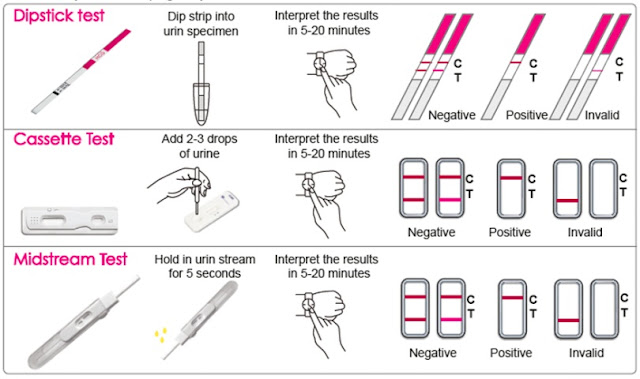6 exercises for pregnant women and young mothers
Having a child is an important event in a woman's life. The body changes and prepares to give birth to a newborn. How do we react to these transformations? How to improve the chances that your pregnancy is going well? Perinatal fitness has its share of benefits.
Whether you are in your first
trimester, at the end of your pregnancy or after your childbirth, your fitness
is not to be taken lightly. Some specific exercises will allow you to develop
or maintain strength in the main muscle groups (abdominal, back, gluteal, etc.)
and thus avoid ailments during your pregnancy and recover more easily after
your delivery, your muscles being stronger.
Exercises for the first quarter
1.Exercise called "the superman" helps to develop the deep abdominal muscles.
1. Stand on all four legs and
extend the lower back to "clear" the lumbar lumen.
2. Pull the chin so that the back
of your head is parallel to the ground.
3. Take an inspiration, then an
exhalation; Lengthen one leg, and then the opposite arm.
4. Hold for 10 seconds while
trying to stay as stable as possible.
5. Repeat this exercise 10 times
2.The exercise of the bridge adapted to the first trimester allows to develop the muscles known as "of the posterior chain" and to work the stabilizers in its basin and its lower back.
1. Stand on your back, feet
parallel not too far from the buttocks.
2. Breathe in and exhale the
muscles of the pelvic floor (perineum) and lift the pubis slightly to
"clear" the hollow in the lower back, then lift the pelvis off the
floor.
3. Make sure your lower back is
not digging.
4. Hold this position for 45
seconds while continuing to inhale and exhale.
5. Repeat the exercise 3 times.
Caution: Respect its limits. Avoid
hyperthermia, so do not over-drive too much. Avoid too high intensity. Always
be able to speak during training.
Exercises for the last trimester of pregnancy
3.The suitable bridge for the third trimester of pregnancy makes life easier for women who are not comfortable directly on their backs.
1. Place a balloon in the middle
of the back, buttocks towards the floor near the heels, head in the extension
of the column. The column should be as long as possible.
2. At the expiration, bring the
pubis to the chin and making the movement of a rocker, lift the pelvis towards
the ceiling by allowing the head to retreat so as to lean on the balloon.
3. At the inspiration, keep the
posture.
4. On expiration, return to the
starting position.
5. Repeat 10 times.
4.The pump adapted for the third quarter incorporates the Swiss balloon to create an instability. This exercise develops the shoulder stabilizers.
1. Stand near a wall, your feet
to the width of your hips and your hands to the sternum, wider than your
shoulders. Make sure your lower back is not too arched, bringing the pubis
slightly to your chin. Note that the longer the feet are away from the wall,
the more demanding the exercise.
2. Move the pelvis and shoulders
closer to the wall by bending your elbows on each side.
3. Push back quietly from the
wall.
4. Repeat the exercise for a
total of 20 repetitions.
To optimize exercise, make sure
to maintain a good alignment of the lower back, avoiding it hollowing and
keeping the head in the extension of the column.
Caution: Avoid injuries by adapting the
exercises. Consider the physiological changes of the body as much hormonal as
for the posture and weakness of the abdominals.
Exercises for new moms
5.The exercise of the half-board makes it possible to work gently the superficial musculature. It brings together the visible muscles of our body, whose role is, above all, to produce movement.
1. Stand on the floor on the
elbows that are under the shoulders. The knees are also placed on the ground.
2. At the expiration, move the
pelvis toward the floor so that it is diagonally from the knees to the
shoulders, making sure the lower back is long (not dug), the head in the
extension of the column.
3. At the next expiration,
without losing the correct posture, peel the knees off the ground, making sure
the lower back does not dig.
4. Hold for 10 seconds, each time
you expire, try entering the navel to the column.
5. Take a pause of 5 seconds,
repeat 10 times.
6.This exercise, when well done, has an incredible power over the organs. By the pressure set, these are "sucked" upward and inward, as well as the pelvic floor and transverse muscles that are also involuntarily recruited. This exercise should be done immediately after childbirth.
1. Place the column along the
wall, open the sternum and make sure the lower back is on the wall.
2. Inhale normally by letting the
belly inflate.
3. Slowly exhale as much air as
you can in the chair
4. Before you breathe in again,
close your mouth and close your nose.
5. Make a false inspiration, that
is, without letting air in or out, as if you wanted to inspire, but you will
feel that it stops at the level of the glottis. You will see your belly go in
and go up under your ribs.
Do 10 reps, 3 times in the day.
Warning: The fetus is no longer in danger, we
want to protect the mother. Do not rush the workout, and instead go gradually.
We want to avoid long-term problems. The trauma of the internal organs, which
are strongly affected by childbirth, must be avoided, and all ligaments and
muscles must be restored to a degree of flexibility before being put to extreme
stress.


Comments
Post a Comment